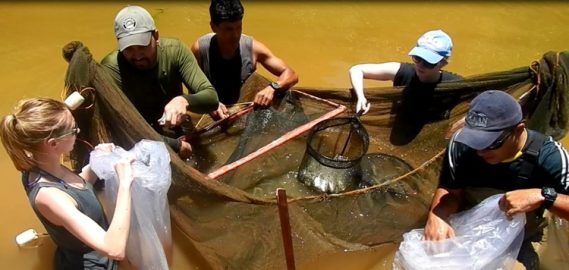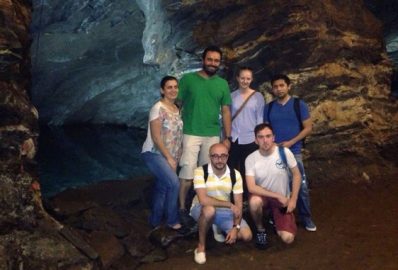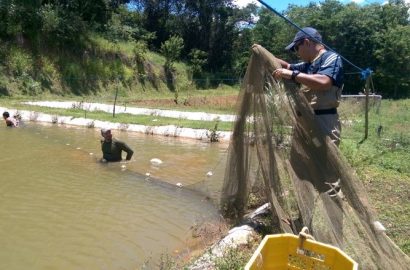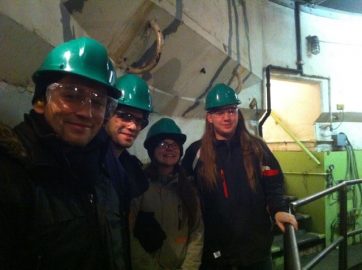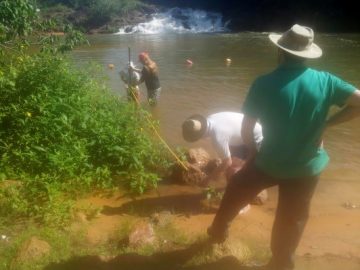The international placement as part of the CDT Group Project in year 1 is a distinctive feature of the CDT-SIS student experience, and that differs from anything offered in any other doctoral programmes, including other CDTs / DTPs etc., hosted by the University of Southampton. This is one of the unique selling points of the CDT-SIS. It provides a focal point for cohort building and associated peer-to-peer learning and skill development, gives insight into global infrastructure challenges, and allows students to engage with international research excellence, often by integrating which large consortium projects.
“The History and Future of Autonomous Travel”The group, which was comprised of mechanical engineers and a psychologist who studies the influence of human factors in transport research, investigated whether the barriers to future uptake of autonomously controlled vehicles were financial, political, technological or behavioural. During an assessment of the availability and use of autonomous systems across four types of travel (rail, road, air and sea) the students found that, although each mode had developed its own approach and adopted different niche technologies, the parallels between their achievements and technological trajectories are very similar. However, each also faces different drivers for conversion to autonomous operations and hence need to overcome different social/organisational barriers to achieve wider uptake of the technologies. This research is currently being prepared for publication within the Proceedings of the ICE: Transport journal. It is hoped that a further publication from this Group Project, comparing the behavioural response of travellers to autonomous systems and subconscious biases towards/against such forms of travel compared to traditional human controlled vehicles, will also be generated. This research area that focuses on human behaviour is conducted in collaboration with contacts at the Railway Technical Research Institute (Japan) and the Masdar Institute of Technology (UAE). These international links were developed as part of the Group Project activities, adding an important international dimension to the students’ research during the first year of their candidature. In order to gain first-hand experience of autonomous transport systems, the group visited such systems within Japan and the UAE. Initial research and work done before the research trip found that the media often portrays these autonomous systems as far more advanced or capable than they actually are. This was found to be the case with the Masdar Personal Rapid Transit system in Abu Dhabi, portrayed as a great network that will eventually link the entire city with underground transit lines; whilst in reality it is based on 1970’s automated guideway technology and lacks any degree of autonomy. In comparison, the Yurikamome line in Tokyo is a fully autonomous transit system constructed over 20 years ago. Further, the Dubai Metro, the most punctual autonomous rail system in the world, is a Japanese designed system. The group were particularly interested in the segregation or integration of autonomous transport systems within their respective modes. Whilst the UAE have the benefit of little existing infrastructure, Tokyo is already heavily congested and it is essential that future transport systems are integrated within their mode, i.e. use the same existing infrastructure. The research trip also allowed the group to visit a number of organisations; both academic and industry, which further complimented the work undertaken. The contacts made during this trip have allowed us to continue collaborative work with both the University of Tokyo and the University of Abu Dhabi, which we intend to run a study on the perceptions of autonomous travel with respect to global location and varying cultures. The interdisciplinary nature of the CDT, and indeed the research trip, has allowed us to combine experiences of differing backgrounds to cover a wider research basis and assess aspects that as individuals we have little prior knowledge of. This is realised in combining experience in road and rail transportation as well as the mix of human factor engineering. Likewise, visiting the Japanese Rail Research Institute and further University research departments covering transport and engineering psychology has allowed the Group Research Project to further develop and our knowledge base expand. Whilst some aspects of the project weren’t initially completed, the group are keen to continue this qualitative study to assess how the underlying reasons and trends associated with differing cultures will eventually affect the take-up and acceptance of future autonomous transport systems. |
Improving the Environmental Sustainability of Hydropower in BrazilStudents from the EPSRC Centre for Doctoral Training in Sustainable Infrastructure Systems collaborated with Brazilian partners at the Department of Civil Engineering at the Federal University of São João del-Rei and CEMIG, one of the worlds’ largest producers and distributors of electricity, to investigate the impacts of hydropower turbines on commercially important fisheries. The results of the project will help develop alternative operation regimes to mitigate for negative environmental impacts. As part of their Group Project, the students developed a range of transferable and technical skills during participation in a large international interdisciplinary research programme. Research undertaken during the international placement is currently being refined back in the UK with the intention to produce a high impact scientific publication. There are in excess of 50,000 large dams in operation worldwide, river infrastructure that enhances quality of life through the provision of electricity, flood amelioration, opportunity for navigation, and water supply for other uses, such as irrigation schemes. However, the use of water to generate electricity can have negative impacts on other provisioning ecosystems services, such as fisheries, if not managed in an environmentally sensitive manner. Freshwater vertebrates are considered to be among the most vulnerable vertebrate groups, and between 20-30 % of freshwater species are classified as either vulnerable or endangered. The impact of dams is one of the primary causal factors for the decline of freshwater species, including commercially important fish that drive some of the world’s most productive fisheries, worth between US$4.3 and US$7.8 billion per year, and make up the primary dietary protein source for approximately 60 million people worldwide. In Brazil, the rate of hydropower development surpasses that experienced in the developed world, and is second only to some Asian countries, such as China. This provides challenges to sustainable infrastructure development in a region recognised to be a biodiversity hotspot, where the abundance and diversity of fish species drives important large-scale fisheries. In Brazil, increased awareness of detrimental impacts of hydropower on migratory fish has led to efforts by the electricity generating industry (e.g. CEMIG) to engineer effective mitigation solutions. One of the primary impacts of hydropower dams relates to the high fish mortality, e.g. during events for which magnitude of impact is are often quantified as tonnage of fish killed, for those species that are travelling downstream and become entrained into the turbine units. While direct mortality or injury as a result of mechanical blade strike has been widely investigated, the impacts of barotrauma (abrupt rapid decompression during passage through the turbine) have received relatively little attention, especially for South American species. This study investigated the physiological properties of selected endangered and commercially important fish in Brazil to better understand the potential damage caused as a result of barotrauma during turbine passage. The project represents an international collaboration with academic and industry partners that would not have occurred without the CDT-SIS. Fish swim bladders, composed of collagen fibre, primarily function to regulate buoyancy through the maintenance and control of gas content. Rapid changes in external pressure can result in fatal injuries associated with swim bladder rupture due to rapid expansion during decompression. This can cause instantaneous death, or reduced buoyancy control increasing susceptibility to predation. The CDT-SIS students participated in a study led by Brazilian colleagues to evaluate the physical effects of alternative rates of rapid decompression on the physiology of curimbatá, a commercially important fish, passing through hydropower turbines. Using expertise available in biomechanical properties of soft tissues at the Faculty of Engineering and the Environment at the University of Southampton, the CDT-SIS students conducted tests to determine the tensile strength of swim bladder tissue, and how this might be compromised due to barotrauma. During the international placement the students developed new skills and gained experience when confronted with challenges of working on a large-scale interdisciplinary project. Transferable skills related to project management within strict time constraints, and communicating with a wide variety of experts from different cultures. The students reported that previous training in leadership and teamwork provided earlier in the programme was particularly useful at the most challenging times. The group also gained insight into experimental design, consideration of research ethics, and conducting rigorous risk assessments. New technical skills were forged as innovative methods to assess the mechanical properties of a swim bladder, tissue seldom considered by biomechanical engineers, were developed for the first time. The team members are continuing to work together with the external partners to complete the project, and expect to submit articles to appropriate journals in the near future. The students highlighted the exceptional hospitality and support provided by the Brazilian hosts during their stay. This was reciprocated when the Brazilian researchers visited the University of Southampton to further develop the collaboration. Overall, the international placement provided a once in a life-time opportunity to develop research skills through involvement in a real life project of high significance. |
Group Research Project in Brazil and CanadaThe project involved assessment of sediment transport following the removal of a dam on the Pandeiros River, MG, Brazil and Mactaquac dam on the St John River, NB, Canada. This project was undertaken through collaboration with the University of Southampton and Universidade Federal de Lavras (UFLA) and the University of Southampton with the University of New Brunswick. Both dams require decommissioning and need an engineering solution that combines knowledge from a range of backgrounds in order to predict the fate of sediment released after dam removal. This topic is currently under much debate in the field of research as little is known on the best way to model and predict dam removals and the effect that they have on downstream geomorphology and ecology, as most projects are undertaken on a case by case basis. As this project dealt with a hot topic in the field of research, it helped develop research techniques that can be used for future research projects, specifically a PhD. The project was separated into two different sections, one analyzing Pandeiros and the conditions experienced at that dam, the other analyzing Mactaquac dam. Both projects had the same underlying aims. PandeirosThe project involved investigation of the effect that the decommissioning of a dam on the Pandeiros River, a rural area in the north of Minas Gerais, Brazil, would have on the downstream geomorphology due to the sediment released after dam removal. The focus of the research project was on sediment transport following the removal of the dam; specifically attempting to estimate and model where the sediment will deposit and the timescale it will occur over. The 2014/15 iPhD team travelled to Brazil at the end of March to conduct fieldwork which would enable construction and prediction of sediment movement and deposition or aggradation zones downstream of the dam using a 1D hydrological model of the Pandeiros River created using HEC-RAS. The primary aim of the field visit to Brazil was to obtain sufficient data through measuring cross-sections of the river downstream of the dam for approximately ten kilometers and estimating flow speeds so that an initial estimate of removal and deposition areas could be easily identified and used to calibrate the future model. A Differential Global Positioning System (DGPS) was extensively used to provide an accurate horizontal and vertical accuracy within the results. This consisted of a base station, which once set up and left static in one location is able to communicate with satellites, and a rover, which calculates its position relative to the base station via Bluetooth. 69 cross-sections were obtained by the group during the visit to Brazil, over eight kilometres downstream of the dam. These were inputted into the 1D modelling software package, HEC-RAS. Figure 1 shows a plan view of the river, with the dam being at the top of the image and the river flowing from top to bottom. Figure 2 shows a side-elevation of the river as it flows downstream from right to left, with the large vertical drops shown being the waterfalls. MactaquacA short field trip to Fredericton, NB, Canada was undertaken in February. Data was available for Mactaquac and therefore the focus of the visit was to understand the magnitude of the problem in more detail through visiting the dam and liaising with international companies in order to produce robust work that could help in deciding the fate of the dam. Meetings with NB Power, who own the dam and are contracting members of the University of New Brunswick to determine possible scenarios for Mactaquac dam, were held with the iPhD team. The GDP work involved running simulations of different possible scenarios of dam removal in order to predict changes to geomorphology of the downstream reach. |


